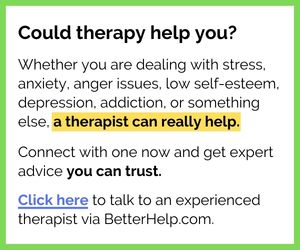There is something you do—and something you keep doing—that is wrong in some way.
Perhaps it harms you, perhaps it harms others. Maybe it’s bad for animals, the environment, or society in general.
But you keep doing it nonetheless. You know it is wrong, but you do it anyway.
Why?
Well, for starters, humans are, by nature, very habitual beings. This can lead people down both good and bad paths with varying consequences.
Habits are the things you do without really thinking about them. They can be positive or negative, but they occur regularly.
And because of our habitual nature, it’s easy to fall into harmful or destructive habits and even allow ourselves to become defined by them. We wear labels representing our habits, whether negative or positive. For example, a person who smokes might refer to themselves as a smoker, or a person who routinely goes for a run might use the label “runner.”
Whatever the reason is that you’re doing the negative thing, it’s okay. You can do plenty of things to support your efforts to stop/change the behavior. You’ve already taken the crucial first step of understanding and acknowledging that change needs to happen. The next step is to understand the reason behind why you’re doing what you’re doing.
Speak to an accredited and experienced therapist to help you stop doing something you deem to be wrong. You may want to try speaking to one via BetterHelp.com for quality care at its most convenient.
Reasons Why People Continue To Do Something They Know Is Wrong
There are many reasons why a person might continue doing something they know to be wrong. Below is a list of reasons, but it’s not conclusive. There are other reasons too. Once you find the reason, you can shift your focus onto changing the behavior. But, the why is first.
Peer pressure.
Peer pressure can be so very challenging to overcome. If everybody is doing one thing, even if it’s negative, it’s challenging not to gravitate toward doing that too. The desire to want to belong, fit in, and be needed can far outweigh anything else.
But bear in mind the saying, “Lie down with dogs, and you’ll get fleas.” Even if what everyone is doing looks fun, exciting, and perhaps even thrilling, wrong is wrong.
It will help if you stay vigilant about living an authentic life. Peer pressure can be mild or intense. This might look like someone gently encouraging you to do something you know is wrong or using blackmail or threats to push you down the incorrect path.
Fitting in is a large part of life, and it’s human nature to want to belong somewhere, but peer pressure can make that more challenging. Peer pressure can cause a person to become involved in cheating behaviors, bullying, and the use of drugs and alcohol. The desire humans have to fit in and be accepted is so strong that it could change how you live your life. It could be why you do something you know is wrong.
It’s become normal.
If you’re doing something you know is wrong, but everyone else is doing it too, it might become normalized. When a bad habit or routine becomes normalized, participants continue doing it because it’s what feels right, even if that’s not the case.
When the wrong things are normalized, it can create a lot of struggle. To overcome it, you must go against the norm and create a new path for yourself. Of course, resistance, snide comments, or other negative consequences might result from you redefining your new normal. Still, living a life of integrity is worth it, I think.
It’s easier.
As mentioned earlier, humans are habitual creatures. Breaking a habit or routine requires effort, diligence, and showing up daily to make the change. It’s easier to continue doing what you know is wrong because change isn’t required. You can just continue doing it.
However, it’s the wrong thing, and you know that it is, so carrying about those feelings and the guilt might not be worth it, wouldn’t you agree? The easier thing in life isn’t always the better thing.
Low self-confidence.
If you’re doing things that you know are wrong, you may struggle with low self-confidence. This can make it challenging to step up and say something, make changes, and alter your life so you’re not doing that thing anymore.
However, low self-confidence can affect your life in many ways, so it’s worth working on and building up. Commit yourself to doing things that make you feel fantastic to build up your self-confidence.
Stress.
Nobody lives stress-free. Life is always throwing things at people—good, bad, and awful twists and turns, weaving you through childhood, adulthood, and life as a whole. Stress can be challenging to deal with and might have you turning to other ways to handle it. Enter the things you’re doing that you know are wrong. A way to help with this is to strengthen your coping skills and eliminate stressors.
How To Stop Doing The “Wrong” Thing
There isn’t one answer when trying to overcome a negative habit. Below you’ll find several tangible tips that you can incorporate into your life so you can strengthen your efforts.
Remember that breaking negative habits and changing behaviors is hard and requires consistent effort.
Make sure you treat yourself kindly and show yourself some compassion. Changing a routine is complex and requires perseverance, patience, and drive.
1. Recognize what you’re doing is wrong.
A habit is when we do the same particular thing at the same time (or in the same situations) without fail. Recognizing that you’re doing it is the first step toward breaking the cycle. So, become aware of how you’re living your life. Rather than functioning on autopilot, be aware, intentional, and authentic as you move through each day.
When you encounter something that you’re not sure about, consider whether what you’re doing is wrong or not. Ask yourself how you feel and what your inner narrative is saying. Before you can change anything in life, you must recognize that it needs changing. Acknowledge that you’ve found a behavior or pattern that you don’t like, and now you’re going to work toward stopping it because you know it’s wrong for you.
2. Learn what your triggers are.
Triggers are the emotional response to something. You can understand yourself by identifying what triggers you to do what you know is wrong. Knowing your triggers for the behavior puts you back in control of your mental health and overall well-being. Knowing your triggers will put you back in the driver’s seat of life rather than being a passenger.
When we can’t manage our emotions and responses, they can start to control us. This can result in doing things that we know are wrong simply to quiet the emotional response.
Here’s a quick rundown of how to learn what your triggers are:
- Identify and acknowledge any emotional responses.
- Journal to track behavior patterns.
- Listen to your body and notice any physical or emotional changes (feeling nauseous, unexplained physical pain, stomachache, headache, racing heart, etc.).
- Step back and evaluate once you notice the changes.
- Be curious and try to understand your reaction to the trigger.
- Practice self-compassion.
Because triggers can signal various responses, it’s essential to identify them and take back control of those responses. This can help you to stop doing the thing you no longer want to do and put you back in control of your reactions and responses.
Understanding your triggers can help you change, avoid, limit, and reduce the number of times you’re being exposed to them and, therefore, not follow through with the behavior that follows on from that trigger.
3. Understand the “why.”
Take note of what you’re doing that is wrong and spend time sitting with the “why?” This might feel uncomfortable and leave you feeling unsure, but if you sit with this, you’ll start to understand.
Why are you doing something that you know is wrong? Does it make you feel like you belong? Does it make you feel more confident and better prepared? Perhaps it’s a stress reliever?
Once you understand the why, you can change the behavior pattern to something else. As creatures of habit, we often repeat the same thing over and over without ever stopping to question why we are doing it. Is it bringing us additional joy? Do we feel better doing it?
Without thinking, we often just repeat the pattern, bringing the same effect over and over. Take a few minutes to understand the purpose behind what you’re doing, and then turn to other ways to bring that purpose alive.
4. Create a support network.
Open up to your support people regarding what you’re trying to change so they can help you. Doing this will allow others to support you, encourage you, and be there through the good times and bad.
In addition, having a support network will help your mental health and overall well-being which will make changing the habit feel more manageable.
5. Replace the wrong thing with a good thing.
Make it a goal that you’ll do something positive every time you feel the urge to do something you know is wrong. Write it down and stick it up in areas of your home where you spend the majority of your time. That way, you’ll always stay focused and aware.
Practice being present in the moment and recognize when you’re feeling the emotional response so that you can counteract it immediately with a newly developed positive habit/routine. Replace the thing you want to stop with something that makes you feel great.
6. Remind yourself as often as needed.
We can be our own worst enemies, sometimes planting doubt and uncertainty into our minds at every turn. It’s hard to be an adult in such an uncertain world, and often, we find peace in routine and habitual behavior, even if they’re negative. There is comfort in knowing what will happen next.
Make sure you remind yourself often that you’re human, you’re learning, you’re doing a hard thing trying to change a pattern, and that deserves self-compassion and care. It would be helpful to remind yourself that you’re doing great and not fall victim to a harsh inner critic.
7. Be aware of setbacks.
You’re not going to be perfect and get everything right at the beginning. Making changes, creating a new routine, and developing positive habits is so hard. Show yourself the compassion to make mistakes and allow yourself the grace to feel the feels and continue trying to change.
The key mindset to get into is one that can accept that setbacks aren’t failures. They are simply a part of life and allow you to develop and strengthen the skills needed to handle them.
8. Self-care is vital.
Self-care is key for life. It’s key to creating the best life possible, and it’s definitely crucial in stopping yourself from doing something you know is wrong. Self-care isn’t always facials, bath bombs, and spa days. It’s also exercise, prioritizing healthy sleep, setting healthy boundaries, and protecting your inner peace.
9. Success isn’t a straight line.
Success, much the same as healing, isn’t linear. It’s an up-and-down, beautiful ebb and flow. Success comes when you keep trying, not necessarily when you are achieving. Success comes from recognizing that you’re doing something you know is wrong and making positive changes to correct the behavior/habit.
Change requires dedication, perseverance, effort, and consistency. However, you must give yourself compassion to make mistakes, forget, and step back. Success isn’t about fixing the wrong but instead devoting time and energy to righting the wrong.
10. Positive affirmations.
Positive affirmations are things you say to give yourself peace, power, and confidence. The world teaches us not to like ourselves, to need change, and to constantly fall victim to negative thoughts.
Positive affirmations are like a mantra you repeat to yourself. For example, in challenging moments, I repeat to myself, “I can do this, I can do this.” I find that it makes me believe that I can do whatever the thing in front of me is and gently quiets the thoughts of doubt.
11. Leave yourself reminders.
Grab yourself some sticky notes and write out the thing you’re trying to change. For example, whenever I reach for a cookie, I will have a carrot stick instead. Then, you write it out and stick it on the cookie cupboard, the fridge, and any other surface you see. This will help to reinforce in your mind that the thing you’re doing that you want to change is possible, and you’re in control of it. Leave yourself reminders everywhere.
12. Learn to say no.
Learn to say no, whether it’s to others or yourself. No is a powerful word and reminder; it doesn’t require an explanation. It doesn’t need to be “No, because…” It can just be “No.”
13. Lean into a routine.
Once you replace the thing you’re doing that you know is wrong with something constructive and positive, rely on routine to help you continue it. Routine helps with many obstacles in life. It removes the guessing game and allows you to relax and trust the process.
So, replace the wrong thing with something good and embrace routine. Once you repeatedly stop doing negative things and turn to something positive, a routine will form, and you’ll find the whole process easier.
14. Stop thinking it will be easy.
Nothing in life comes easy, and changing a wrong thing into something positive won’t be easy either. Though it’s completely and entirely possible, it’s still challenging and an uphill battle more often than not. So let go of the thoughts that it should be easy, and prepare yourself to commit and put in consistent effort to create a positive impact.
15. Learn when to listen to your mind.
Your mind will try to have you continue doing what you know is wrong simply because that’s the habit. It’s easier to do the same thing rather than something different. It’s the path of least resistance.
Learn to recognize when there are red flags, something needs your attention, and you are defaulting to the easiest path. There are times when our minds are leading us to a safer path, but other times it’s leading us to the easiest thing, and the easiest thing is not always the best thing.
16. Let go of thinking you need to be perfect.
You don’t need to be perfect, and you won’t be, and that’s okay. Imperfection is still beautiful. Allow yourself to exist without explanations and try to change the harmful habit with a positive one. But, when you make a mistake, remember that you don’t need to be perfect.
Positive change takes time to build, and you don’t need to do everything in one day. You’re human and we all make mistakes, and that’s okay. Let go of all thoughts that you must be perfect and be able to change the habit immediately. Remember that it will take time and effort.
17. Persevere.
Even when you have a setback, continue to persevere. Continue to try to make a change. Don’t give up on yourself. Once you identify that you’re doing something you know is wrong, it’s entirely possible to change it. Still, you must keep at it until the wrong effortlessly becomes something right.
18. Don’t play the comparison game.
I recommend you never play the comparison game. Don’t fall victim to it when trying to change a habit. It takes time, and everyone is different. If you must compare, then compare yourself to who you were yesterday, your efforts, and whether or not you showed up for yourself. Compare yourself only to yourself, to be better and do better.
Don’t compare how others overcome challenges to how you do, because you don’t know how they did. Everyone is unique; we all have different emotions, reactions, and responses. Let yourself just be you and work on yourself.
The takeaway.
It’s hard to stop doing something that you know is wrong. It takes a high level of discipline and consistency. The tips above are tangible tidbits that can be applied to your life to make a difference. Remember to be soft, gentle, and kind with yourself and acknowledge that it takes strength to create change.
Still not sure how to stop doing something that is wrong for you? Talking to someone can really help you to handle whatever life throws at you. It’s a great way to get your thoughts and your worries out of your head so you can work through them.
Speak to a therapist about it. Why? Because they are trained to help people in situations like yours. They can help you to identify why you do this thing and walk you through the process of changing that trigger-behavior pattern.
BetterHelp.com is a website where you can connect with a therapist via phone, video, or instant message.
While you may try to work through this yourself, it may be a bigger issue than self-help can address. And if it is affecting your mental well-being, relationships, or life in general, it is a significant thing that needs to be resolved.
Too many people try to muddle through and do their best to overcome issues that they never really get to grips with. If it’s at all possible in your circumstances, therapy is 100% the best way forward.
Here’s that link again if you’d like to learn more about the service BetterHelp.com provide and the process of getting started.
You’ve already taken the first step just by searching for and reading this article. The worst thing you can do right now is nothing. The best thing is to speak to a therapist. The next best thing is to implement everything you’ve learned in this article by yourself. The choice is yours.
You may also like:
- How To Form A Habit: Developing Habits That Stick
- How To Create And Stick To A Routine: A Simple 5-Step Process
- 9 Great Sources Of Motivation To Change Your Life
- How To Develop Self-Control When You Have None












